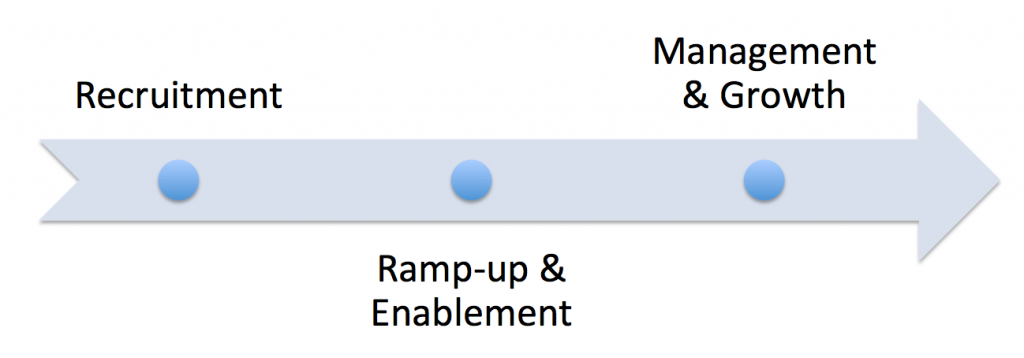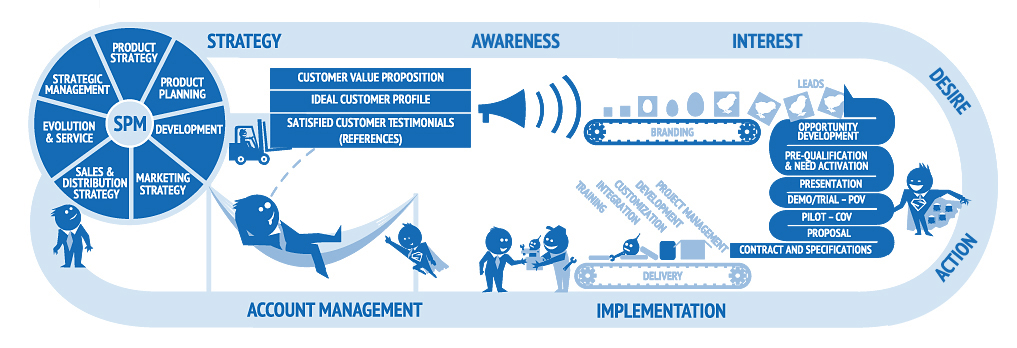Description
Transcript
Using a channel of independent companies to find, win, make, keep and grow happy customers on our behalf has a long tradition in the software industry. For some software companies the indirect channel has been a major contributor to global success, but for most software companies making it work remains a constant struggle.
I am Hans Peter Bech and in this video I will discuss the channel partner program and the design principles we should apply building successful partner programs.
Building an indirect channel essentially requires the development of three basic frameworks:
- An ideal partner profile
- A channel partner agreement and
- A channel partner program
The channel partner agreement is the legal document signed by us and our partners.
We do not want to change this document very often.
The practical terms and conditions associated with your channel partner relationships are collectively known as the channel partner program.
These are the things you do for and with you channel partners, and these things may change frequently depending on situational needs.
The objective of the channel partner program is to make it attractive and easy to do business with you, enabling you to recruit and manage partners and make them successful.
The more successful partners you have the faster you can consolidate you position as the market leader.
The channel partner program must support the three stages of your relationship with your channel partners:
 The first stage is recruitment:
The first stage is recruitment:
The channel partner program must motivate potential partners to talk to you in the first place and eventually to sign up to include your product in their own customer value proposition.
The second stage is Ramp-up & Enablement:
You partner program should motivate the channel partners to invest in the ramp-up phase, showing patience and persistence overcoming the learning curve and their initial lack of customer references.
The third stage is Management & Growth:
The partner program should motivate the channel partners to keep growing their business and thereby growing your business.
Fundamentally the partner program must be designed to support precisely those activities that you ask your channel partners to assume responsibility for.
This illustration shows some typical steps and activities required to support a customer acquisition process that you may ask your independent channel partners to assume responsibility for.
 I strongly recommend that you develop your own “best practice customer acquisition process” before you design your channel partner program as each element of the program should support each step in this process.
I strongly recommend that you develop your own “best practice customer acquisition process” before you design your channel partner program as each element of the program should support each step in this process.
Thus, your channel partner program is the default path from getting started to achieving return on the investment with your product in the channel partner’s value proposition and running a profitable business “thereafter.”
The program should be fair and balanced, requiring investments and focus from you and from your channel partners, otherwise it will not work.
Your channel partner program is not supposed to be a free lunch where the partners can serve themselves as they please without any financial implications.
However, you should always – and with current technology it is also feasible to – deliver as many of the services as possible in formats associated with the lowest marginal cost possible.
An example is training, which is always a major element in a channel partner program, where you should invest in e-leaning formats, that may take some up-front investment on your behalf, but can be delivered to your channel partners at very little marginal cost.
The fundamental principle is to offer high value that the channel partners must pay to receive and then find ways to deliver this value as inexpensively as possible.
Your channel partner program shouldn’t be a profit center, but it shouldn’t be a loss center either.







